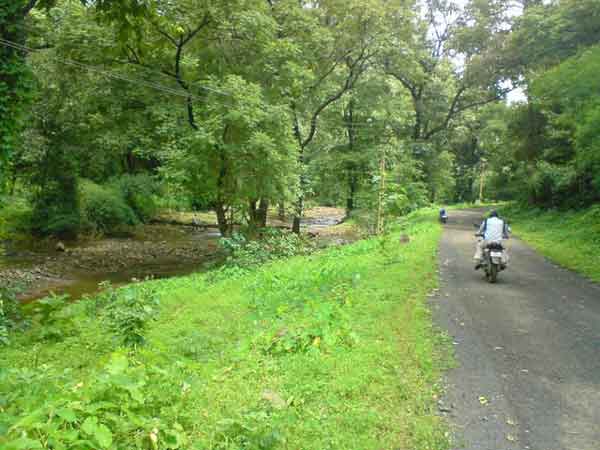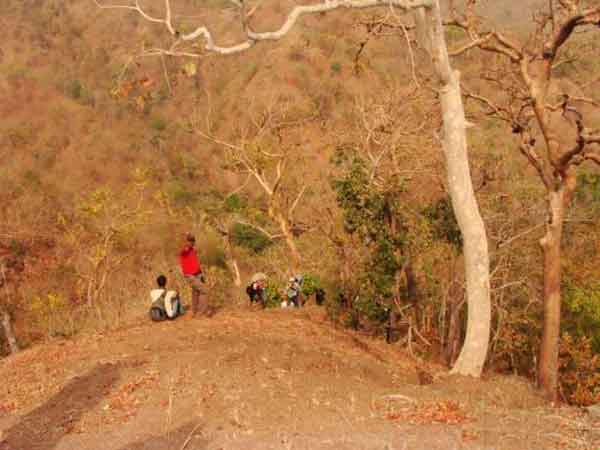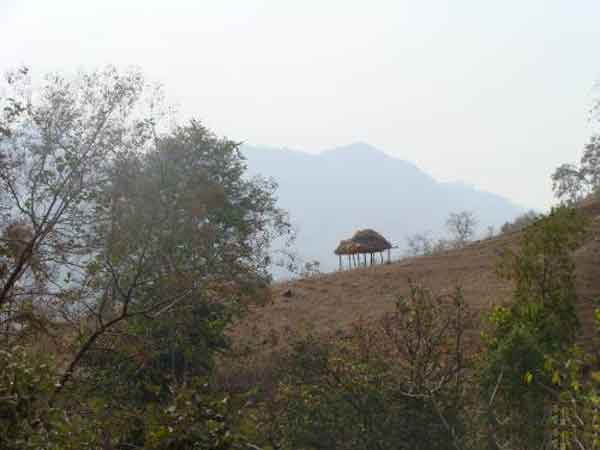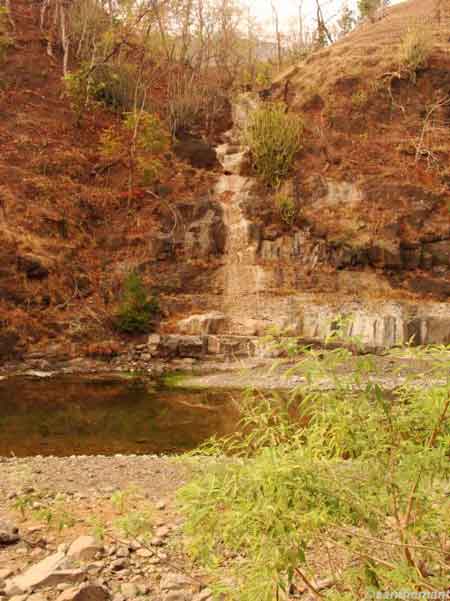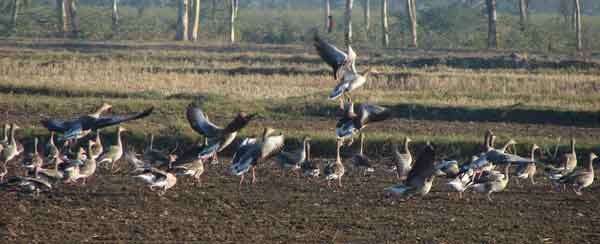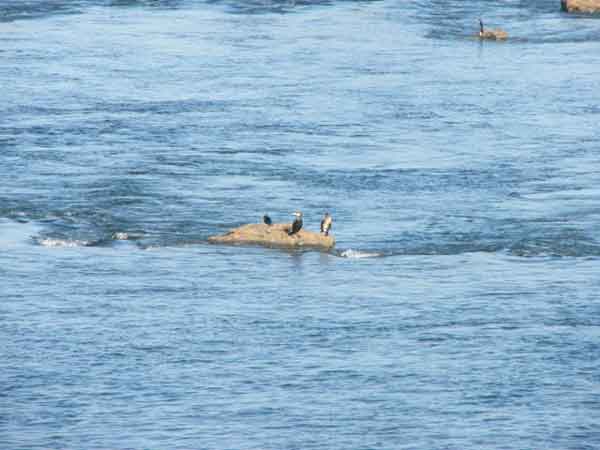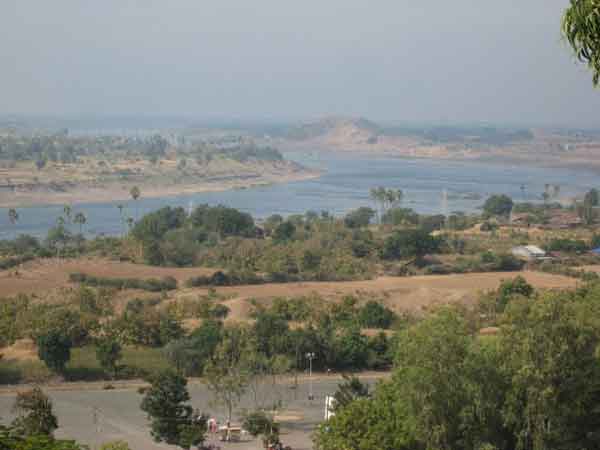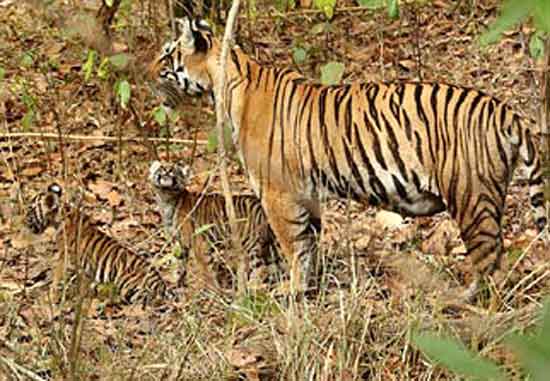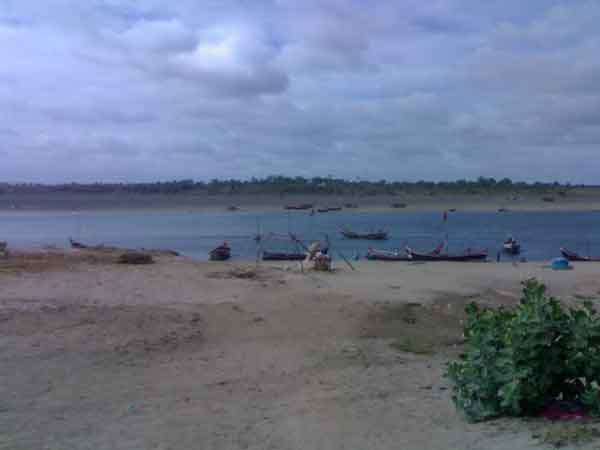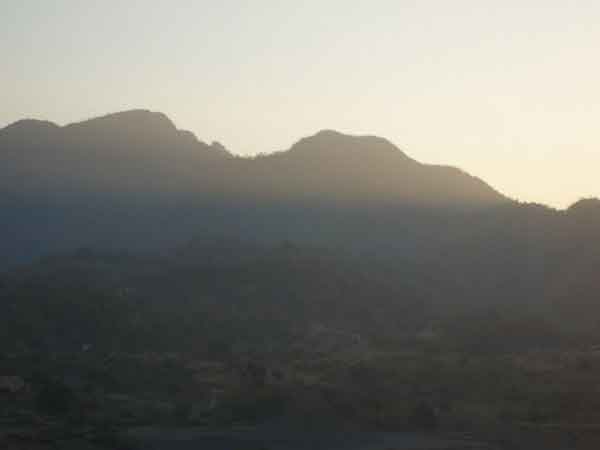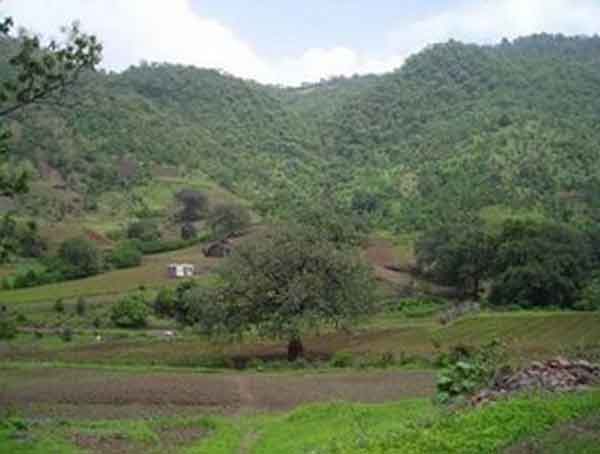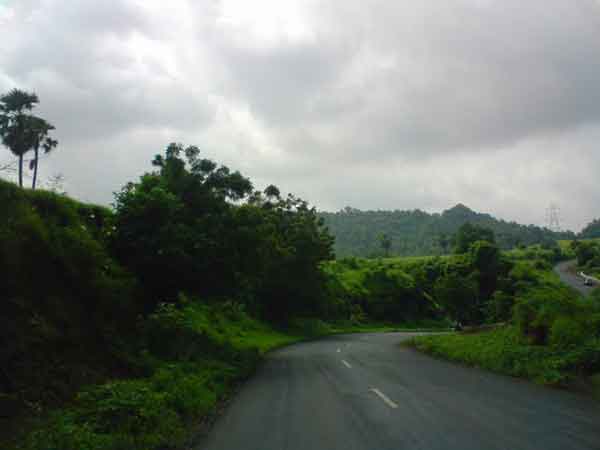Shoolpaneshwar Wildlife Sanctuary
Tuesday, 06 October 2009 04:58
Shoolpaneshwar Wildlife Sanctuary Narmada |
About: |
|
Shoolpaneshwar Wildlife Sanctuary is a lush, green forest reserve spread across the districts of Narmada and Bharuch in Gujarat, India. It is known for its diverse flora and fauna, picturesque landscapes, waterfalls, and the Shoolpaneshwar Temple, making it a popular destination for nature enthusiasts, wildlife lovers, and trekkers. The forest area rated as one of the best and thickest in the state, is spread over an area, which includes a major watershed feeding two major reservoirs with the Rajpipla hills as backdrop. The thick vegetative ground cover not only provides endless greenery and habitat and home to a variety of life forms, but also conserves the soil and water. .jpg) Moist teak forest, moist mixed deciduous forest, dry deciduous scrub, dry bamboo brakes and dry tropical riverine forest, constitute varied habitats in the Sanctuary. These forest types merge into each other imperceptibly. Teak is the principal species. Patches of pure bamboo dominate the western and north-western parts. A study documented 575 species of flowering plants in the Sanctuary. |
Location info: |
| Location: Narmada and Bharuch districts, Gujarat, India |
| Coordinates: 21.78° N, 73.72° E |
| Nearest City: Bharuch |
| Best time to visit: Round the year |
Climate/Weather: |
| Summers 23°- 44°C. Winters 10°-36°C |
History: |
| The sanctuary was established in 1982 and initially covered an area of about 150 sq. km. It was later expanded to its current size to protect the rich biodiversity of the region. The name "Shoolpaneshwar" is derived from the ancient Shoolpaneshwar Mahadev Temple, dedicated to Lord Shiva, located within the sanctuary premises. |
Interesting things to do: |
| Trekking and Nature Walks: Explore the scenic trails through dense forests, hills, and waterfalls. Wildlife Watching: |
Interesting things to Visit: |
| Shoolpaneshwar Temple An ancient temple dedicated to Lord Shiva, which gives the sanctuary its name. Zarwani Waterfall: A beautiful waterfall within the sanctuary, ideal for a refreshing dip and picnics. Rajpipla Hills: Nehru Foundation Stone Sthal: Narmada River: Shoolpaneshwar Mahadev Temple: |
Mobile range info: |
| Mobile network coverage within the sanctuary is limited and may be intermittent. It’s advisable to make important calls before entering the sanctuary. |
How to reach? |
| By Air: The nearest airport is Vadodara Airport, about 90 km away. |
| By Train: The closest railway station is Bharuch, located approximately 80 km from the sanctuary. |
| By Road: The sanctuary is well-connected by road, and one can drive or take a taxi from Bharuch, Rajpipla, or Vadodara. There are also buses available from nearby cities to Rajpipla. |
Nearest Visiting places: |
| Sardar Sarovar Dam: About 20 km from the sanctuary, this dam is one of the largest in India and offers stunning views. Statue of Unity: The world’s tallest statue, located about 25 km from the sanctuary, is dedicated to Sardar Vallabhbhai Patel. Narmada: |
Nearest Petrol Pump: |
| The nearest petrol pump is located in Rajpipla, approximately 15 km from the sanctuary. |
Hotels/Lodge/Accommodation: |
|
Gujarat Tourism Guest House (Shoolpaneshwar Resort): Offers basic accommodation facilities within the sanctuary. Revival Hotel:Sayaji Gardens Near Kalaghoda, Sayaji gunj, Vadodara, Gujarat,India,ph:0265 2793535 Hotel Yuvraj:Near Central Stbus Depot,Sayajigunj,Vadodara,Gujarat,ph:0265 2794439 Hotel Surya Palace:Sayajigunj,Vadodara, Gujarat,India,ph:0265 2363388 |
Things to carry: |
| Comfortable trekking shoes Water bottles and snacks Binoculars for bird watching Camera for photography Insect repellent Sunscreen, hat, and sunglasses Raincoat or umbrella if visiting during the monsoon |
Tips & Suggestions: |
| Visit during the winter season (October to February) for the best experience. Wear comfortable clothing suitable for trekking and outdoor activities. Respect the sanctuary rules and avoid littering or disturbing the wildlife. Carry enough water and snacks as there are limited food options within the sanctuary. Ensure you have a full tank of fuel before heading to the sanctuary, as petrol pumps are not available nearby. |
Help Line/Phone Number: |
| Police Station:100 |
| Nearest Hospital:Baroda Hospital:Anant Apartment,Beside
Aradhana Cinema,Tilak Road,Vadodara,,Gujarat,India,ph:0265
2415405 |
| Society/Community Phone Number: |
| Link:www.gujaratguideonline.com |
Photo Gallery
Video
Dynamic View
|
|
| Laxmi Vilas Palace |
| Laxmi Vilas Palace in Vadodara is one of the famous monuments in Vadodara that is high on tourist value. People visiting Vadodara make it a point to visit Laxmi Vilas Palace in Vadodara. A wonderful exemplification of the Indo-Sarcenic architectural style, the palace is a majestic structure that warrants a special visit if you wish to marvel at the detailed and exquisite work from the close quarters. Indianholiday.com is your indispensable e-travelogue that provides you with all you needed to know on Vadodara Laxmi Vilas Palace....more |
| Citadel of Mahmud Beghada |
| Tour to Gujarat is not only incomplete but an arid experience of vacationing if Champaner is not visited. It is a historical hill town located 47 kms to the north-west of Vadodara. Dotted with impressive mosques like Juma Masjid and Shah-ki-Masjid, this attractive town is charted by several tourists every year. It is lying at the foot of Pavagarh Fort and the feature that distinguishes it from rest of the places of tourist interest is the enchanting reflection of the ruins of palaces and mosques in the lake. On arriving at this place however the one site that will hold your attention unwavering is the Citadel of Mahmud Beghada in Champaner.Champaner Citadel of Mahmud Beghada is a rectangular shaped stunning structure. It is very expansive and measures around three-quarters of a mile in length and 280 yards in breadth. This is indeed the quintessential example of the forts and monuments in Gujarat....more |
| Pavagadh |
| Located at the foothill of the Pavagadh, Champaner is 50 km from Baroda in the State of Gujarat. The complete hill is one amongst the oldest stone formations in India and resembles a reddish yellow shade.Pavagadh hill measures to a height 800 m and was once standing as a fortress of the Hindus under the regime of the Solanki Kings and later under the Khichi Chauhans. The fort was later taken over by Sultan Mehmud Begarah in 1484 and renamed as Muhammadabad. There are many temples dating back to the 10th, 11th, 13th and 15th centuries, all built in the Nagara style. The ruins are stretched over an area of 6 sq km at the foothills of Pavagadh.....more |
| Maharaja Fateh Singh Museum |
| Maharaja Fateh Singh Museum, Vadodara Maharaja Fateh Singh Museum is located on the Laxmi Vilas Palace grounds at Vadodara, Gujrat.In 1961 the building of a school for the children, built by the Maharaja was converted into the museum. The museum exhibits outstanding painting collection of 19th and 20th century. Maharaja Sir Sayajirao Gaekwad III mostly collected the paintings. European paintings of old masters like Raphael, Titian and Murillo, modern Western paintings and Indian miniature paintings, paintings of Raja Ravi Varma are worth mentioning.Vadodara Maharaja Fateh Singh Museum houses the remarkably huge number of works of art of the royal family. Maharaja Sir Sayajirao Gaekwad III during his several visits out of India collected works of art and stored them here....more |
| Watson Museum |
|
Located in the Jubilee Gardens, the Museum commemorating Colonel John Watson
is a good introduction to Saurashtra's cultural heritage. Important exhibits
are copies of artifacts from Mohenjodaro, 13th century carvings, silverware,
natural history exhibits and textiles. A huge 19th century marble statue of
queen Victoria is fascinating. There are many splendid portraits and
photographs of royal princes of Saurashtra and European dignitaries,
handicrafts, pottery and princely relics.The Watson Museum of Rajkot is a
memorial of Colonel James Watson, a political agent of Saurashtra. The
Watson Museum at Rajkot is known for housing a huge collection of ancient
and traditional artefacts. The museum of Rajkot exhibits the cultural
heritage of Saurashtra. Among the exhibits of the Watson Museum in
Rajkot....more
|
| Narmada Dam |
| The Narmada is Bifurcating Bharuch and Vadodara districts, this Narmada district came into existence during the year 1997. This place is located between the banks of the rivers Narmada and the Karjan at the southern parts of Gujarat state. The circumference of this district is 2,755 sq.km. and Rajpipla is the district headquarters. The places of tourist visit are Sardar Sarovar, the largest dam projects of South Asia the Karjan Dam, Vijayraj Palace dates up 1912, Shoolpaneshwar sanctuary and Malsamot Waterfalls. There are important shrines and holy sites around such as Garudeshwar,Chandod, Shuklatirth and Nareshwar, and temples of Harisiddhi Mata, Hanuman and Gayatri Mata......more |
| Sardar Sarrovar Dam |
| The Sardar Sarovar Dam is on the Narmada River in Gujarat state, 170 kilometres (106 miles) upstream from where the river flows into the Gulf of Khambhat in the Arabian Sea. The Narmada is the largest westward flowing river in India. A few kilometres downstream from the dam site on the north bank is Kevadia Colony, the town built to house the construction workers and related bureaucracy. Vadgam, the first village behind the dam, starts around one kilometre from the dam site and stretches out for several more kilometres along the north bank. About 15 km upstream on the south bank a small tributary running into the Narmada forms the Gujarat-Maharashtra border. On the eastern (Maharashtra) side of the creek is the village of Manibeli, a focus of resistance to the project where the Narmada Bachao Andolan (NBA -- Save the Narmada Movement) maintains an office......more |
| Sayaji Bagh |
| One of the major tourist attractions in Vadodara is the Sayaji Bagh in Vadodara, the large green park whose main entrance is on the Tilak Road. The Sayaji Bagh contains a planetarium that offers a 35 minutes show daily, except on Thursday.This garden also known as the garden of Sayaji, is an extensive park sprawling over more than a hundred acres with a mini rail track around the periphery. Cheerful kids can be seen enjoying a joy ride on the toy train. Elders may also join the fun after a little coaxing of the guard.Sayaji Bagh Vadodara is one of the major attractions in the city. Also known as the garden of Sayaji, it is an extensive park that contains a mini rail track. Sayaji Bagh of Vadodara was built in 1879 by Sayajirao on the banks of river Vishvamitri. The Bagh is known for its splendid gardens, which are adorned with beautiful pavilions and fountains. The gardens of the Sayaji Bagh in Vadodara serve as pristine retreat amid the hustle and bustle of the city life......more |
| Narmada River |
| Whatever we tell you, however detailed a description we give, it won't do justice to the body of water that flows from the Amarkantak plateau to Arabian sea, the river we call Narmada. Hinduism sees it as one of the seven most sacred rivers in India, and in fact, most wisdom traditions around the world draw inspiration from rivers and their behavior.The Narmada Periplus Maris Erythraei calls it the Nammadus. The British Raj called it the Nerbudda or Narbada is a river in central India and the fifth largest river in the Indian subcontinent.Narmada is a Sanskrit word meaning 'the Giver of Pleasure. It forms the traditional boundary between North India and South India and flows westwards over before draining through the Gulf of Cambey Khambat into the Arabian Sea,30 km 18.6 mi west of Bharuch city of Gujarat....more |
| Archaeological Park |
| ....more |
| Narmada Waterfall |
| ....more |
| Akota Gardens |
| ...more |
